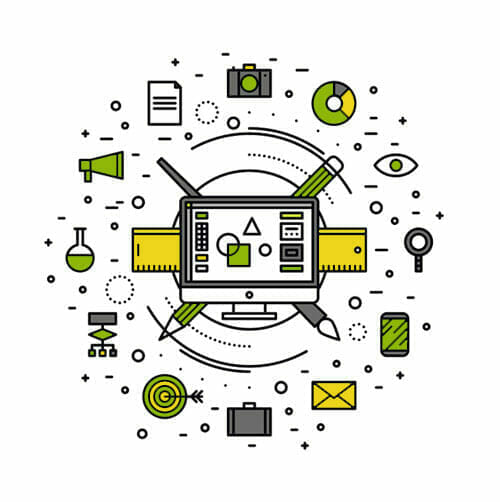Custom rubber parts are essential components across various industries, serving multiple functions such as sealing, vibration damping, and insulation. This guide will explore the basics of custom rubber parts, their applications, design considerations, the manufacturing process, and cost factors involved in production. By the end, you’ll have a comprehensive understanding that will help you make informed decisions while ordering custom rubber products from a reliable custom rubber supplier.
Understand Custom Rubber Parts and Their Applications
Custom rubber parts are designed and manufactured to meet specific customer needs and can be made from various rubber materials, including natural rubber, silicone, neoprene, and EPDM. These materials allow for diverse applications across multiple sectors.
Common Applications of Custom Rubber Parts
|
|||||||||||||
|---|---|---|---|---|---|---|---|---|---|---|---|---|---|
Types of Custom Rubber Parts and Their Uses
The variety of custom rubber parts is extensive. Understanding the different types of custom rubber products helps you make informed decisions based on your specific needs.
Common Types of Custom Rubber Products
|
|||||||||||||||||||
|---|---|---|---|---|---|---|---|---|---|---|---|---|---|---|---|---|---|---|---|
Design Considerations When Ordering Rubber Parts From a Custom Rubber Supplier
Designing custom rubber parts requires careful consideration of several factors to ensure optimal performance and efficiency.
Key Design Elements to Consider
Material Selection
Different rubber materials offer varying properties. Choose based on the intended application and environmental conditions.
Dimensions and Tolerances
Precise measurements are crucial. Communicate dimensions and tolerances clearly to your custom rubber supplier.
Functionality
Understand the part’s intended function. Ensure the design incorporates features to effectively absorb or dissipate vibrations if needed.
Aesthetics
Consider color, texture, and overall design, especially for consumer products.
Regulatory Compliance
Ensure materials and design meet industry standards, especially in healthcare and food processing.
Key Factors for Optimal Results During the Design Phase
Certain key factors can help ensure the final product meets your needs effectively.
Communication with Suppliers
Clear Specifications
Provide detailed specifications to your supplier, including dimensions, material types, and performance requirements.
Feedback Loops
Establish communication for feedback during the design process. Regular check-ins prevent misunderstandings.
Prototyping
Importance of Prototyping
Create prototypes to test designs before full-scale production. This helps identify design flaws.
Testing for Performance
Conduct thorough testing on prototypes to ensure they meet desired performance criteria.
Iteration and Refinement
Continuous Improvement
Be open to adjustments based on testing results. Iterative design can enhance performance and quality.
Incorporating Innovations
Stay updated on new technologies and materials that could improve your custom rubber parts.
The Manufacturing Process Explained
The manufacturing process for custom rubber parts varies based on design complexity and materials used. However, the general steps remain consistent.
Key Stages of the Manufacturing Process
Material Preparation
Select and prepare rubber material, mixing raw materials, additives, and colorants to achieve desired properties.
Molding and Shaping
Shape the rubber using methods like injection molding, compression molding, or extrusion, depending on part complexity.
Curing or Vulcanization
Curing enhances rubber’s properties, providing strength and elasticity, crucial for performance.
Finishing Touches
Parts may undergo trimming, grinding, or surface treatment to meet specifications.
Quality Control
Quality checks ensure final products meet industry standards and customer expectations through visual inspections and performance testing.
Tips for Selecting Effective Manufacturers or Suppliers
Choosing the right custom rubber supplier is critical. Here are some tips for making an informed decision.
Evaluating Potential Suppliers
Experience and Expertise
Look for suppliers with a proven track record in custom rubber manufacturing. Their experience impacts quality and reliability.
Technical Capabilities
Ensure the supplier can meet your design specifications with advanced molding techniques and quality control processes.
Material Options
A good supplier offers various material options, allowing you to select the most suitable rubber type.
Customer Support
Evaluate the level of customer support. A responsive team facilitates better communication.
Gathering Quotes and Samples
Requesting Quotes
Obtain quotes from multiple suppliers to compare pricing and services. Provide detailed specifications for accurate estimates.
Sampling and Prototypes
Request samples or prototypes before large orders to assess quality and make necessary design adjustments.
Cost Factors in Custom Rubber Parts Production
Understanding cost factors involved in custom rubber parts production helps you budget effectively.
Key Influencers of Pricing
|
|||||||||||||
|---|---|---|---|---|---|---|---|---|---|---|---|---|---|
Budgeting for Your Custom Rubber Parts
Creating a Detailed Budget
Outline all potential costs, including materials, manufacturing, shipping, and additional services.
Contingency Planning
Include a contingency fund for unexpected expenses to manage surprises during production.
|
|||||||||||||||||||
|---|---|---|---|---|---|---|---|---|---|---|---|---|---|---|---|---|---|---|---|
Ordering custom rubber parts involves understanding your specific needs, effective design, and selecting the right suppliers. By exploring the basics of custom rubber parts and their applications, you can ensure successful projects. Keep in mind key factors in production costs and maintain clear communication with your supplier throughout the process. With careful planning and execution, you can achieve high-quality custom rubber products that meet your requirements and exceed expectations.
Featured client/products:
Glass Floors | Semi Truck Ramp | Glass Blocks| SEO Services Near Me | Steel Yard Ramp | Ramp for Loading Dock | Glass Flooring | Loading Dock Ramps | Portable Yard Ramp | SEO Company Near Me | SEO Agency Akron | SEO Expert Near Me | Marketing Agencies Near Me | Marketing Agency Akron
Yard Ramps | Yard Ramp




